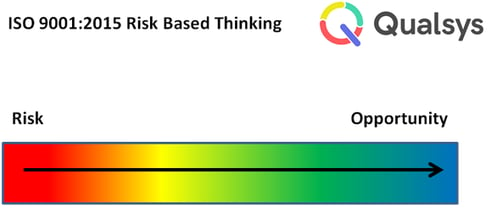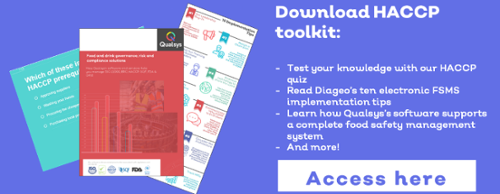Want to contribute to this article?
As a supplier of international drink brands, Scottish manufacturer AG Barr's quality management system is structured around robust BRC and ISO 9001 compliance supported by Qualsys's EQMS software solution.
We asked Group Quality Manager Jon Brewis, operating from AG Barr's Milton Keynes site, to share his insights and best practices for passing BRC audits with flying colours.
Read his three tips below.

1. Walk the 'prep walk'
Every quality manager and auditee's worst nightmare is the glaring non-conformance only spotted with the auditor right next to them.
Whether it's a lost policy document, faulty piece of equipment or a new employee not following the correct hygiene procedure, a last-minute surprise pushes businesses one step closer to a non-conformance, screams unpreparedness to any auditor and can make the difference of a grade boundary.
Jon avoids this scenario with carefully planned 'prep walks'.
Immediately before each BRC audit:
- Each area of the site is given a thorough last-minute check
- Documentation is sorted and re-checked to ensure everything is present
- Any cheap mistakes or weak areas are fixed before the auditor gets a chance to see them
In 2017, 24% of flagged BRC non-conformances could have been amended with a day's notice or less - so it's wise to give yourself as much visibility as you can.
2. Mind the gap
The release of BRC 8 last month demonstrates the constantly evolving nature of food safety and compliance.
Though businesses have until 1 February 2019 to make the jump to BRC 8 before transition audits begin, Jon keeps AG Barr ahead of the curve with frequent gap analyses of new standards, identifying areas where early tweaks and changes can be made for future audits.
Demonstrating you've considered standards before you even accredit to them is guaranteed to impress an auditor and emphasises the drive for continual improvement outlined in ISO 9001.
Jon couples this forward-thinking approach with review of previous audit reports, allowing previous non-conformances and risk factors to be considered in tandem with future opportunities.

3. Brief the team
Everyone on-site needs to be onboard with a BRC audit.
Uninformed or unprepared colleagues create a picture of chaos and confusion for a BRC auditor and increase the risk of non-conformance.
Jon takes the time before each audit to conduct a thorough briefing of each site team, from packing to bottling, ensuring:
- Expectations and requirements are properly understood
- Any questions or areas of uncertainty are answered
- All staff have the opportunity to make any requests that might ease the auditing process - this could be a less confident staff member requesting support or supervision on the day, or a team highlighting a PPE concern they'd like addressing
Jon also recommends assigning small 'support teams' for each audit: pick calm, confident, experienced members of each team to liaise with and satisfy the auditor.

It's normal for BRC audits to be nervy occasions, particularly for complex multi-site businesses. Taking the time to plan ahead, address past mistakes, eliminate last-minute surprises and ensure everyone in the team is up to speed is a big step towards a smoother, more successful audit - and a happier auditor.
Next steps
Learn how AG Barr use Qualsys's software to drive industry-leading quality, boost their internal auditing power and manage their documentation by reading the case study blog post.
Read our BRC 8 transition gap analysis here.
Or download our free HACCP toolkit:









Share your thoughts on this article